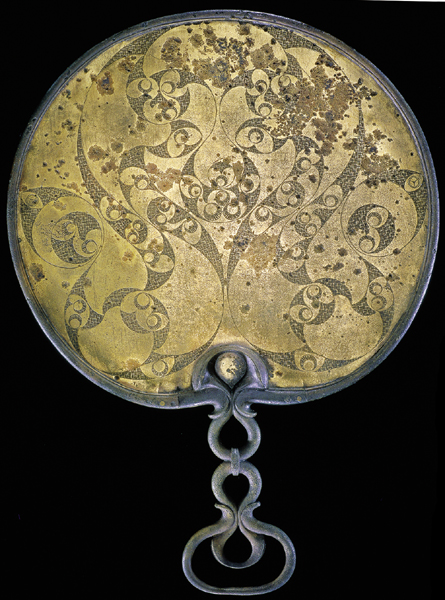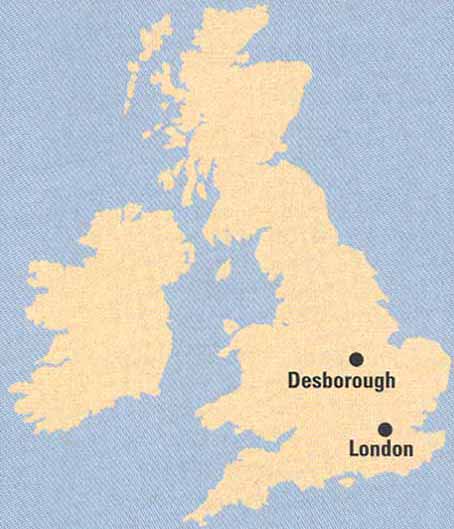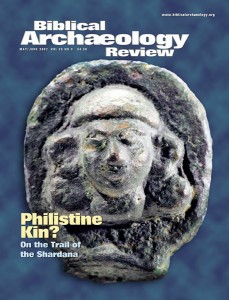
Mirrors were used throughout the ancient world, but few were as elaborately decorated as those of Celtic, pre-Roman Britain.

This 13.5-inch-tall bronze mirror, from the county of Northamptonshire in England, was made in the late first century B.C. The face would have been highly polished, but after two millennia it is the back—intricately engraved with a basket-weave pattern of alternating smooth and hatched areas in a symmetrical lyre shape (probably designed with a compass)—that is most striking.
Such objects required a great deal of time and skill to engrave, and thus they were probably high-status items. Several mirrors of this type have been found in cremation graves—particularly graves of women—throughout southern England. They may have expressed a woman’s status and power in the same way that elaborately decorated weapons expressed a man’s status. (Similar basket-weave designs are found on bronze scabbards and spears from the same period.) This particular mirror was unearthed in 1908 by miners, and it is unknown if it had been associated with a burial.
Already a library member? Log in here.
Institution user? Log in with your IP address.

